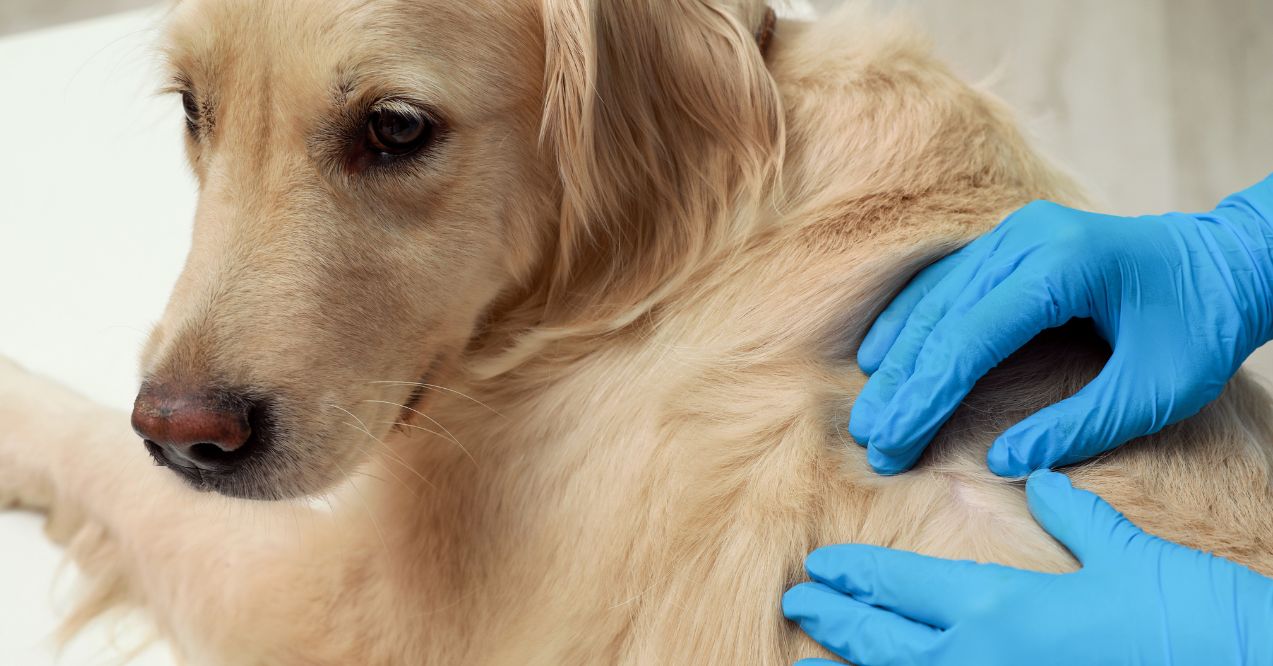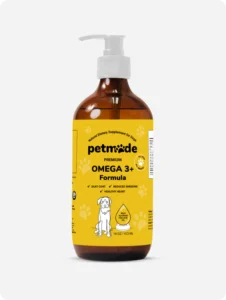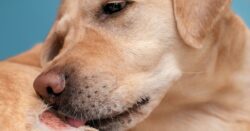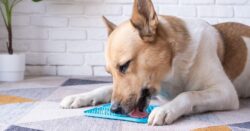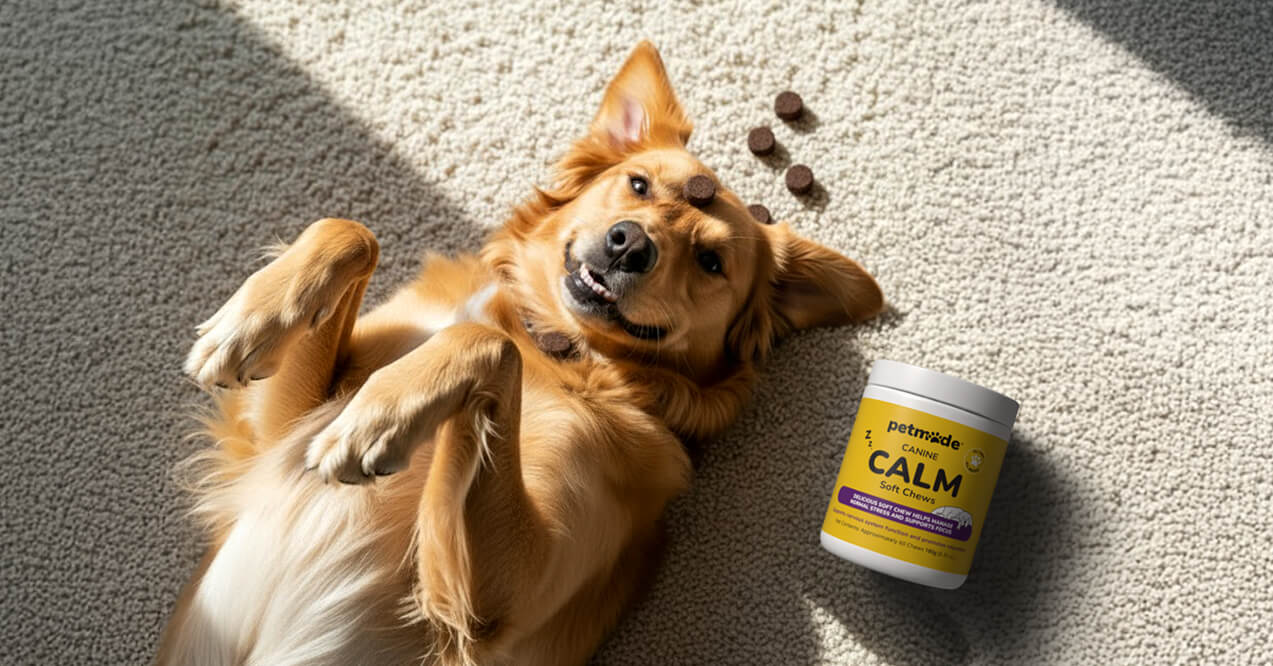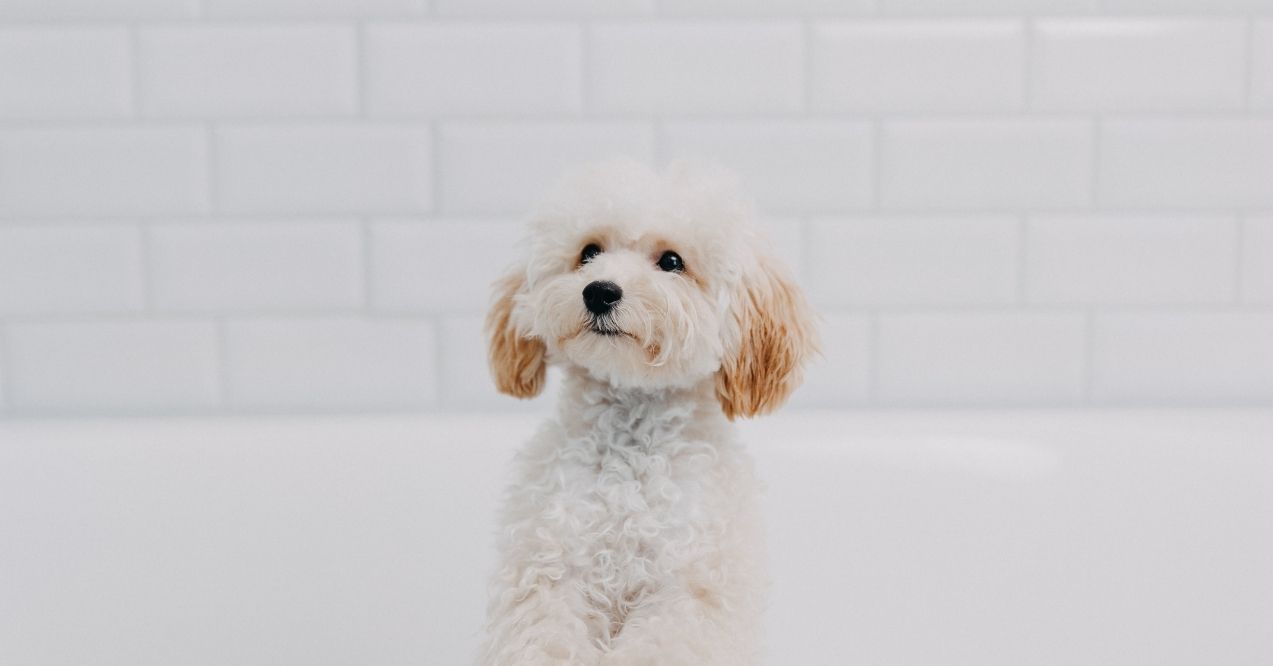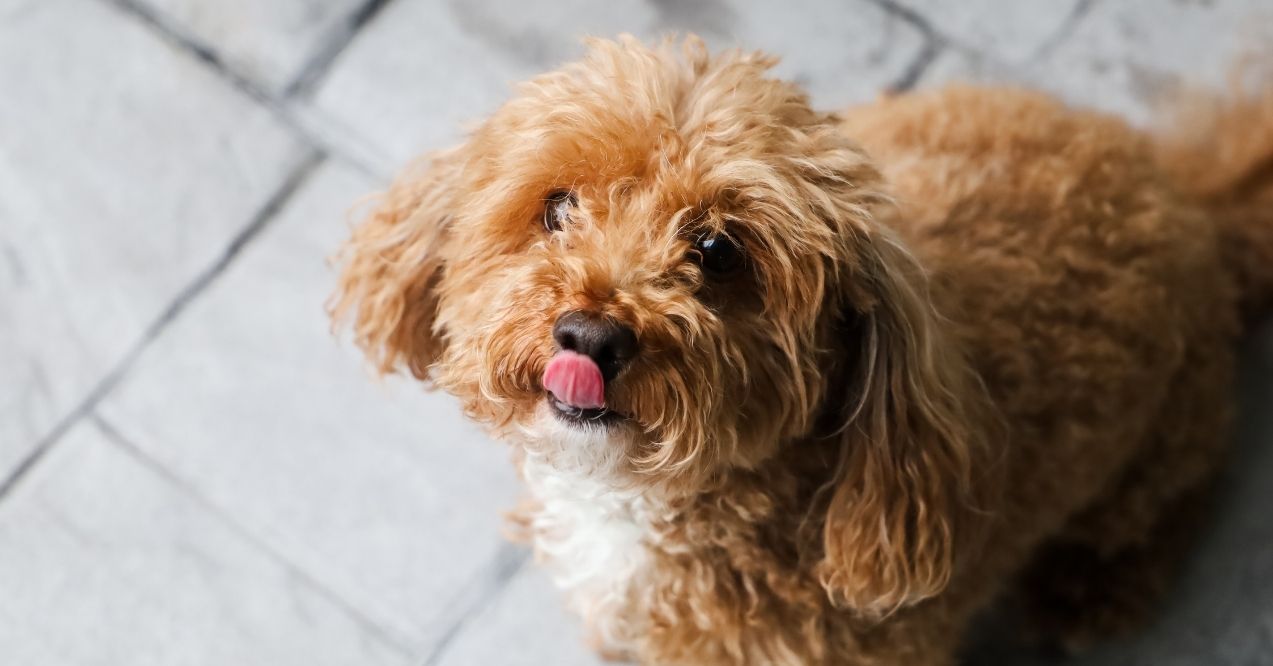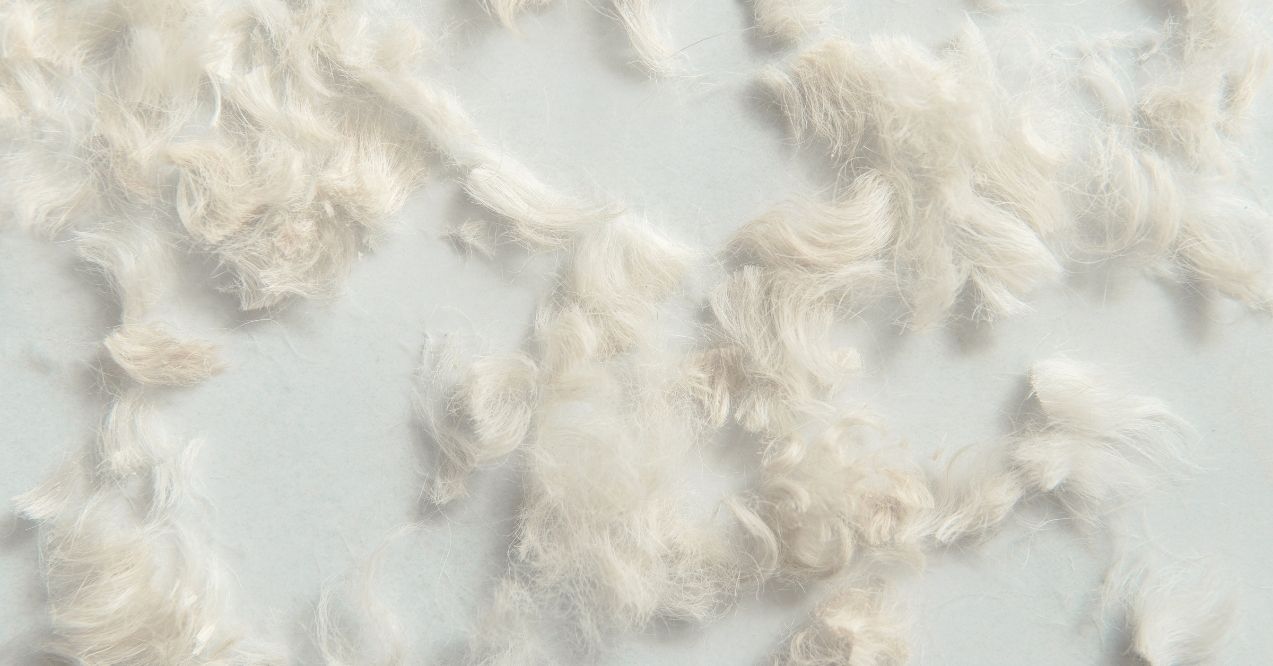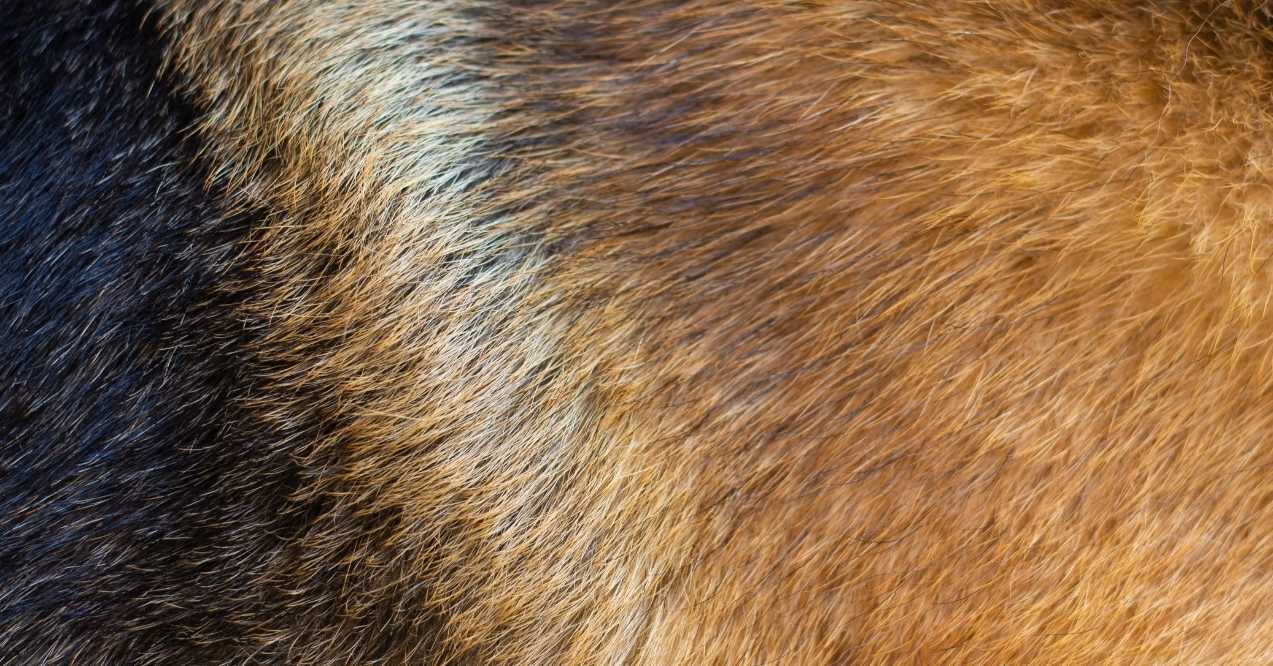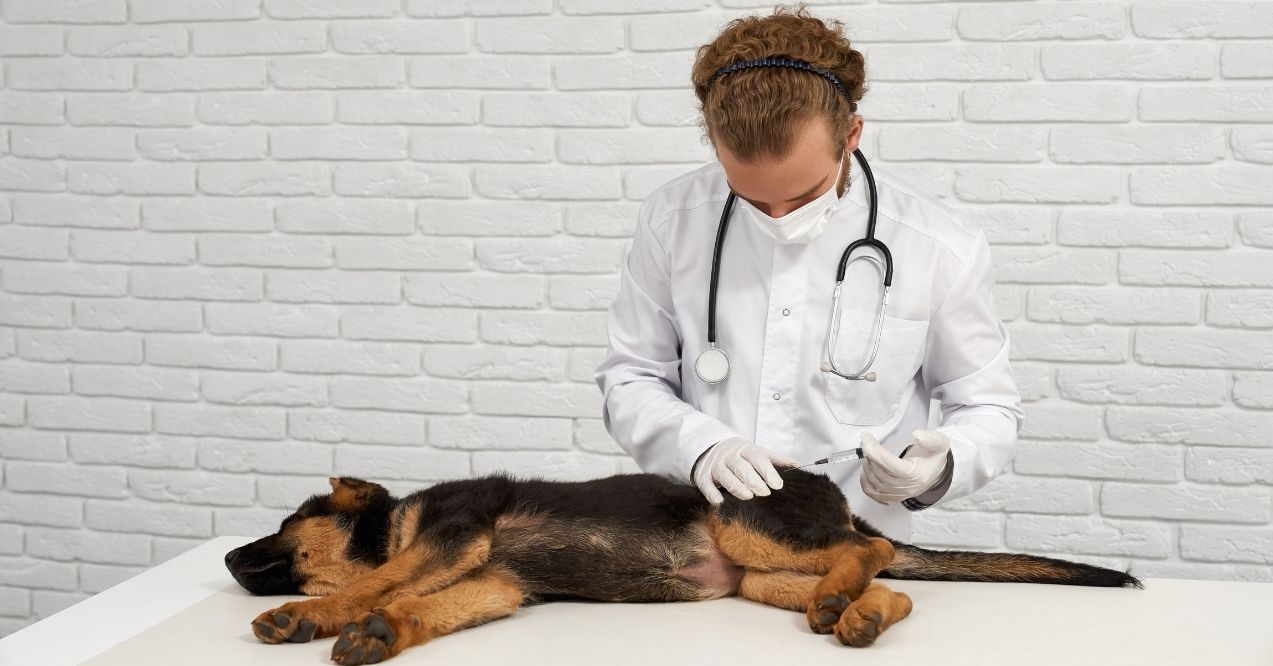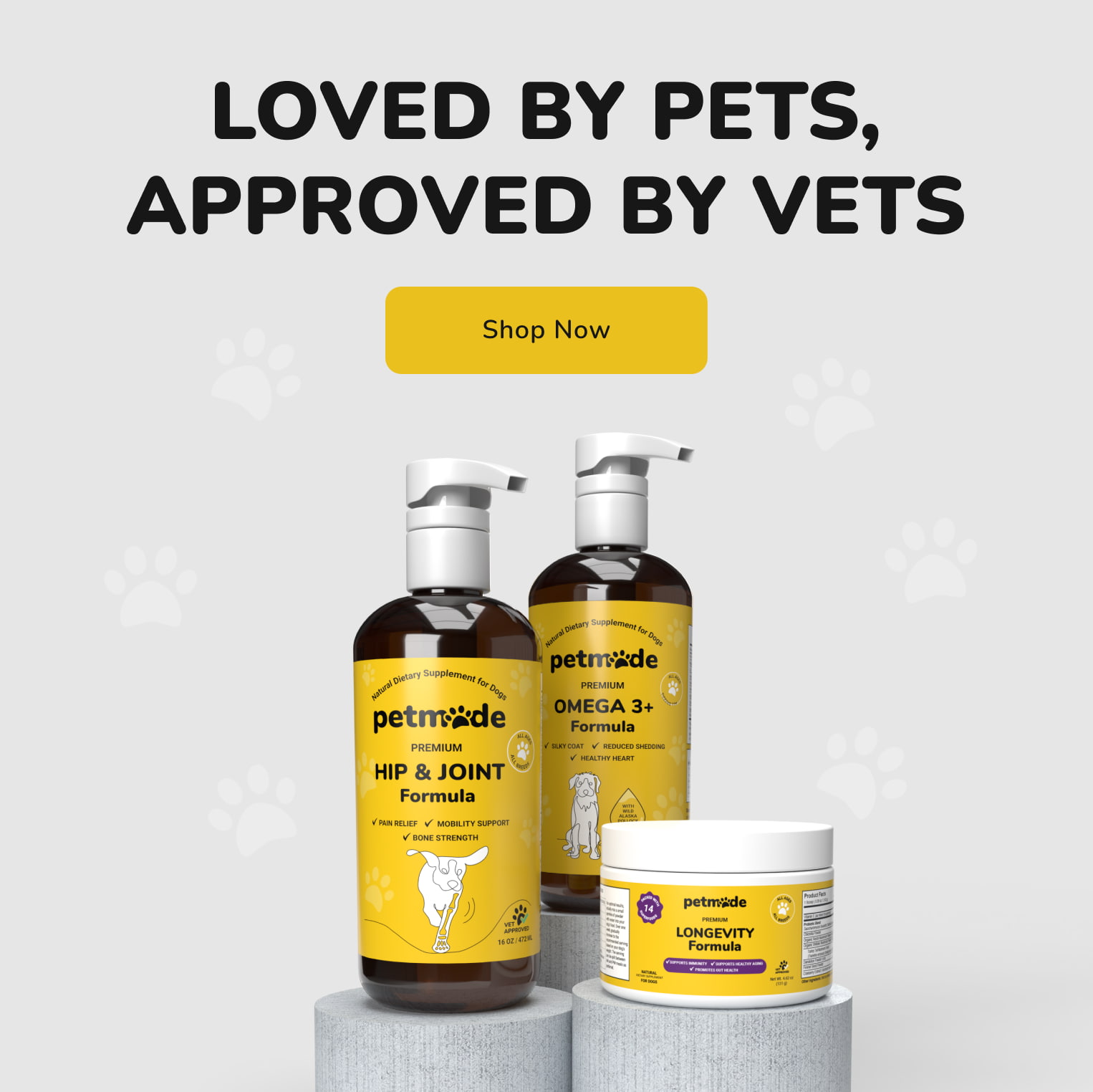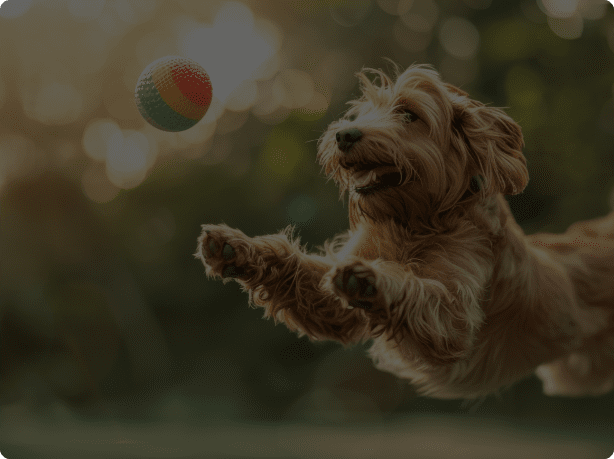10 Golden Retriever Skin Problems and Treatments
Golden retriever skin problems are common challenges for owners of these beloved companions. With their thick, water-resistant double coats, these friendly pups are prone to various skin issues that can cause discomfort if not properly addressed.
While their gorgeous golden fur makes them one of America’s favorite breeds, it also creates unique skin care needs that every owner should know about. Their dense undercoat and water-loving nature can trap moisture, allergens, and irritants against the skin. This makes regular grooming and skin checks essential for keeping your furry friend happy and healthy.
Let’s dive into the most common skin problems Goldens face and how you can help your four-legged companion stay comfortable. Learn more about these amazing dogs in our Golden Retriever breed guide.
1. Golden Retriever Itchy Skin
Golden Retriever itchy skin is often the first sign that something isn’t quite right with your furry friend.
This common issue may stem from various sources:
- Environmental allergens (pollen, dust, mold)
- Food sensitivities or allergies
- Dry skin from weather changes
- Parasites like fleas or mites
Their thick double coat makes these problems worse by trapping irritants close to the skin where they continue causing discomfort. When your Golden starts scratching more than usual, look for redness, inflammation, or flaky patches when you part their fur.
Regular brushing helps remove trapped allergens and distributes natural oils throughout their coat. Consider using a gentle, hypoallergenic shampoo during baths – but don’t overdo bathing as this can strip essential oils. Adding Omega-3 supplements to their diet may improve skin hydration and potentially reduce inflammation.
2. Golden Retriever Rashes
A Golden Retriever rash typically appears as red, irritated patches that may be raised, bumpy or warm to the touch. These rashes often develop due to contact with irritants, allergic reactions, or pesky flea bites. Their thick, luxurious coat creates a perfect environment for trapping moisture and allergens, making rashes more likely to develop and harder to spot early.
Environmental factors play a role in rash development:
- Hot, humid weather increases risk as moisture gets trapped against the skin
- Cold, dry conditions can irritate and dry out their skin
- Seasonal allergens like pollen can trigger skin reactions
- Swimming in chlorinated pools or natural water bodies with bacteria
For mild rashes, natural remedies may provide relief. Coconut oil works as a gentle moisturizer with antimicrobial properties. An oatmeal bath can soothe irritated skin – simply grind plain oatmeal into a fine powder and add it to lukewarm bathwater. Always pat your Golden completely dry after baths to prevent additional moisture from being trapped against their skin.
3. Golden Retriever Dry Skin
Golden Retriever dry skin becomes especially troublesome during seasonal changes, particularly in winter when indoor heating systems reduce humidity. You might notice flaking, dandruff, or your dog scratching more frequently. Their thick undercoat can actually worsen dryness by preventing natural skin oils from reaching the skin surface effectively.
To combat this issue:
- Use a humidifier in your home during dry months
- Brush your Golden regularly to stimulate oil production
- Limit baths to once every 4-6 weeks with moisturizing shampoo
- Ensure they drink plenty of water daily
Diet plays a crucial role in skin health too. Consider foods rich in Omega-3 and Omega-6 fatty acids. These nutrients support healthy skin from the inside out. Treating dry skin on dogs often requires a combination of environmental changes, proper grooming, and nutritional support for best results.
4. Golden Retriever Scabs
When you find Golden Retriever scabs while petting your furry friend, they’re often the result of excessive scratching, licking, or biting at irritated skin. These crusty, sometimes raised areas form as part of the healing process but can indicate an underlying issue that needs attention.
Their thick fur makes it challenging to spot small scabs early, allowing problems to worsen before detection. Regular coat checks help identify issues before they escalate. Part the fur in different sections during grooming sessions to examine the skin thoroughly.
For effective scab management:
- Never pick at scabs, as this can reopen wounds
- Keep the area clean with gentle, pet-safe cleansers
- Apply soothing sprays containing aloe vera or calendula
- Use an E-collar if your Golden won’t stop bothering affected areas
Address the root cause of scratching to prevent new scabs from forming. This might mean changing grooming products, adjusting their diet, or addressing environmental allergens in your home.
5. Golden Retriever Skin Allergies
Golden Retriever skin allergies can make your normally happy pup miserable with constant itching, redness, and discomfort. These loyal companions are particularly prone to both food and environmental allergies that manifest through skin reactions.
Unlike humans who typically experience respiratory symptoms, dogs show allergic reactions primarily through their skin. You might notice:
- Excessive paw licking or chewing
- Face rubbing against furniture
- Red, irritated patches on belly or groin
- Hair loss in affected areas
- Recurrent ear infections
Practical management starts with identifying triggers. Keep a journal of symptoms and potential exposures to spot patterns. Wipe down your dog’s coat and paws after outdoor activities to remove allergens before they can cause reactions. Consider using HEPA air purifiers in your home to reduce airborne allergens.
Food allergies may require an elimination diet under veterinary guidance to identify problem ingredients. Learn more about managing dog skin allergies for long-term relief strategies.
6. Golden Retriever Flaky Skin
Golden Retriever flaky skin often appears as white or grayish particles throughout their coat, similar to dandruff in humans. This condition typically results from dry air, nutritional deficiencies, or infrequent grooming.
When the humidity drops during winter months or in arid climates, their skin loses moisture more rapidly, leading to flaking. This common issue responds well to consistent care:
- Use moisturizing dog shampoo specifically formulated for sensitive skin
- Follow up with a conditioner designed for dogs
- Limit baths to once every 4-6 weeks
- Brush regularly to remove dead skin cells while stimulating oil production
Adding fish oil or flaxseed supplements to their diet may improve skin condition from within by providing essential fatty acids. These nutrients help maintain the skin barrier and reduce inflammation that contributes to flaking.
Watch for signs of unhealthy dog coat like excessive flaking, as they warrant attention before developing into more serious issues. With consistent care, most Goldens show improvement within a few weeks.
7. Golden Retriever Black Spots
Black spots on Golden Retriever skin often develop gradually as your dog ages, similar to freckles or age spots in humans. These hyperpigmented areas usually appear on the belly, gums, or areas with less fur coverage. In most cases, they’re simply a cosmetic change rather than a health concern.
Sun exposure plays a significant role in the development of these spots. The pigment changes serve as a natural protection mechanism against UV damage. However, excessive sunbathing can accelerate this process, especially in light-colored Goldens with less natural pigmentation.
Monitoring these spots is important:
- Create a “spot map” by photographing existing black spots
- Check monthly for changes in size, shape, or texture
- Note any new spots that grow quickly or have irregular borders
- Pay special attention during seasonal coat changes when inspection is easier
For sun protection, consider dog-friendly sunscreen on exposed areas like the nose and belly during peak summer hours, particularly if your Golden loves lounging in sunny spots.
8. Golden Retriever Dandruff
Golden Retriever dandruff shows up as those pesky white flakes scattered throughout their gorgeous coat. Unlike occasional flaking, dandruff tends to be persistent and more widespread. Their thick double coat creates the perfect environment for dandruff to accumulate and become trapped.
Combat dandruff with this multi-pronged approach:
Dog Dandruff Environmental Management
- Use a humidifier in rooms where your Golden spends the most time
- Maintain optimal indoor humidity between 40-60%
- Avoid exposing your dog to extreme temperature changes
Golden Retriever Dandruff Grooming Routine
- Brush thoroughly 3-4 times weekly using a de-shedding tool
- Use an anti-dandruff shampoo formulated for dogs
- Always rinse shampoo completely to avoid residue
Canine Dandruff Dietary Support
- Add a teaspoon of olive oil to their food several times weekly
- Ensure adequate hydration with fresh water always available
- Consider supplements containing biotin and zinc
9. Golden Retriever Hot Spots
Hot spots develop suddenly and can spread alarmingly fast on your Golden’s skin. These raw, red, and sometimes oozing patches typically appear when moisture gets trapped against the skin, creating the perfect breeding ground for bacteria. Golden Retrievers are particularly prone to these painful lesions due to their dense, water-loving coats that dry slowly.
When you spot the early signs of a hot spot:
- Gently clip the fur around the affected area to improve air circulation
- Cleanse with a mild antiseptic solution (avoid alcohol-based products)
- Apply a veterinary-approved soothing spray or cream
- Prevent further irritation with a cone or inflatable collar if necessary
Summer months bring increased risk as swimming, rain, and humidity create ideal conditions for hot spot formation. A seemingly minor irritation from an insect bite or scratch can quickly escalate into a hot spot when your dog’s persistent licking introduces bacteria to the area.
Provide mental enrichment through puzzle toys or training sessions to distract them from focusing on the irritated spot. This mental stimulation serves double duty – keeping your Golden’s mind engaged while allowing the hot spot to heal undisturbed.
10. Skin Discomfort in Moist Areas
Golden Retrievers often develop irritation in areas where skin folds create warm, humid environments. These problem zones include:
- Ears – their floppy structure limits airflow and traps moisture
- Between toe pads – often damp from dew, rain, or swimming
- Armpits – where skin rubs against skin with limited ventilation
- Groin area – naturally warm and sometimes damp
After water activities, thoroughly dry these vulnerable areas with a clean, absorbent towel. For ears specifically, an ear-drying solution can help prevent infections common in floppy-eared breeds.
Consider the seasonal impact on moist-area comfort. During humid summer months, more frequent cleaning may be necessary. Conversely, in winter, indoor heating can actually cause excessive drying, creating a different kind of irritation requiring moisturizing care.
For paw pad protection, try applying paw balm before walks in extreme weather conditions. This creates a barrier against irritants while maintaining healthy moisture levels.
Preventing Golden Retriever Skin Issues
Prevention is always easier than treatment when it comes to Golden Retriever skin issues. A proactive approach saves your furry friend from discomfort and you from worry and expense.
Seasonal Dog Grooming Adjustments
| Spring/Fall (Shedding Seasons) | Summer | Winter |
| Increase brushing to daily sessions | Rinse after swimming in pools or lakes | Reduce bathing frequency |
| Use undercoat rake followed by slicker brush | Dry thoroughly, especially in skin folds | Use moisturizing products |
| Schedule professional grooming if needed | Check regularly for hot spots | Protect paws from salt and ice |
Nutrition plays a crucial role in skin health. Feed a balanced diet rich in quality proteins for cell repair, Omega-3 fatty acids for reducing inflammation, zinc for skin cell production, and Vitamin E for antioxidant protection.
Mental stimulation appropriate for Golden Retrievers’ retrieving instincts helps prevent stress-related behaviors like excessive licking that can damage skin. Puzzle feeders, scent work, or retrieving games provide engaging activities that support both mental and skin health.
Conclusion
Managing Golden Retriever skin problems requires a balanced approach combining proper grooming, nutrition, environmental management, and mental stimulation. Their beautiful double coats need special attention through seasonal changes and activities.
By establishing regular skin checks and maintaining a consistent care routine, you can catch potential issues early before they develop into uncomfortable conditions. Pay special attention to how environmental factors affect your Golden’s skin health – from humidity levels to seasonal allergens.
Itchy skin typically stems from allergies (environmental or food), dry skin, parasites, or infections. Their thick double coat can trap allergens and irritants against the skin, worsening the itching.
Identify and remove the cause, keep the area clean, and use soothing, dog-safe products like oatmeal baths. For persistent or severe rashes, consult your vet for appropriate treatment.
Dry skin often results from low humidity, nutritional deficiencies, over-bathing, or underlying health issues. Their thick coat may prevent natural oils from reaching the skin surface effectively.
Brush regularly to distribute natural oils, use moisturizing dog shampoos, avoid over-bathing, increase humidity in your home, and add Omega-3 supplements to their diet for improved skin hydration.
Advertisement. This site offers health, wellness, fitness and nutritional information and is designed for educational purposes only. You should not rely on this information as a substitute for, nor does it replace, professional medical advice, diagnosis, or treatment. If you have any concerns or questions about your health, you should always consult with a physician or other health-care professional. Do not disregard, avoid or delay obtaining medical or health related advice from your health-care professional because of something you may have read on this site. The use of any information provided on this site is solely at your own risk.
